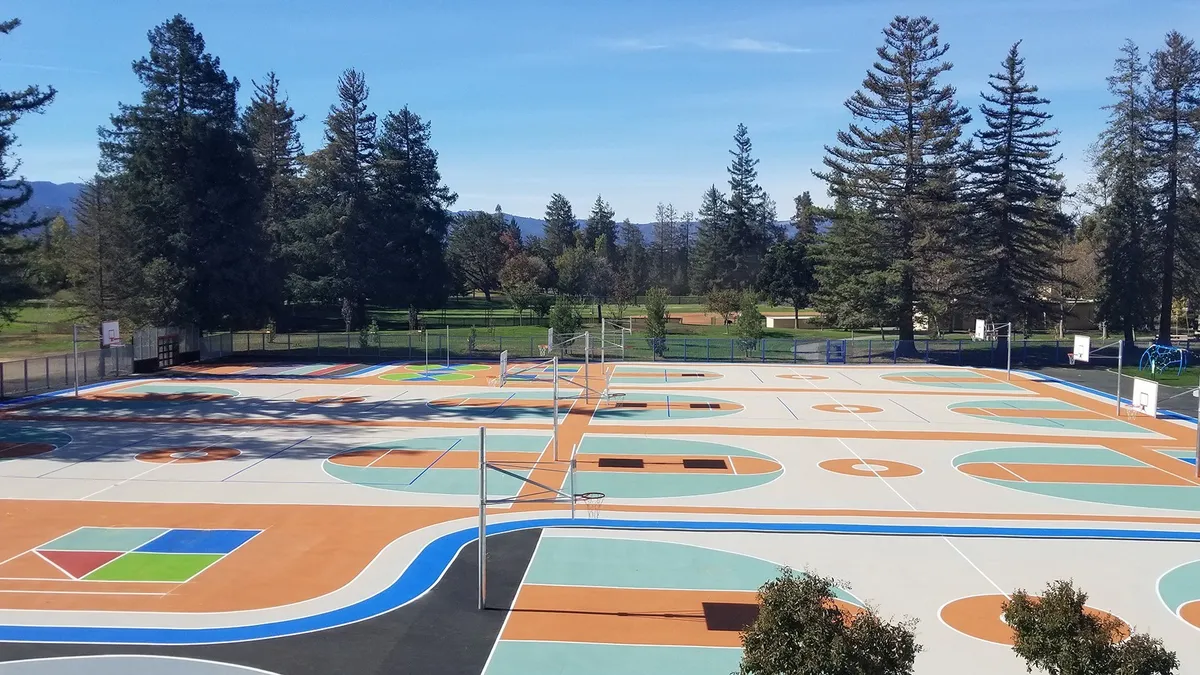Dive Brief:
- GAF, which manufactures roofing and other materials, announced last week it's launching a multi-phased research project in Los Angeles to better understand how urban heat affects residents' quality of life and how cooling solutions such as reflective pavement coatings might address the problem when implemented across a community.
- Working with the Global Cool Cities Alliance and local organizations, the "Cool Community Project" will benchmark surface and ambient air temperatures in Pacoima, one of the hottest neighborhoods in Los Angeles. Partners also will evaluate qualitative metrics, including how extreme heat impacts outdoor play opportunities. GAF said it plans to install cool pavements — and later on, potentially cool roofs or other technologies — in a 10-square-block area.
- While multiple cities, including Los Angeles and Phoenix, have conducted cool pavements pilots, the community-scale approach sets this project apart from other efforts, according to GAF.
Dive Insight:
Roads and other dark, paved surfaces contribute to the urban heat island effect. "Cool pavements" are paved surfaces coated with lighter-colored materials designed to reflect more solar energy and enhance water evaporation to reduce that effect.
By testing the pavement in a larger adjoining area and across multiple surface types compared with some earlier pilots, stakeholders hope to get a better idea of whether the potential benefits from cool pavements are amplified when implemented at scale.
The idea is to take "a more comprehensive approach to a full neighborhood," said Jeff Terry, GAF’s vice president of corporate social responsibility and sustainability, by using the material on not just roads, but also school play areas, for instance. He added that beyond the project's potential cooling benefits, "it's also about raising awareness and education around climate change and the impact that urban heating can have on the residents." GAF also was one of the manufacturers involved in the city of LA's earlier cool pavements pilot.
While cool pavements may successfully reduce surface temperatures, previous studies have found that they're also not a magic bullet for addressing urban heat, as that reflection can in some cases cause people to absorb more heat and feel worse.
But in the years since pilot programs began, cool surfaces technology has also evolved, according to Maria Koetter, executive director at the Global Cool Cities Alliance, a group that advocates for research, market development, implementation and legislation related to cool surfaces. This particular research effort will assess not just the before-and-after conditions in a neighborhood where cool pavements are installed treated with cool pavements, Koetter said, but also those of an untreated adjoining neighborhood as a control.
Terry said GAF and other program partners are currently in the community engagement phase. The aim is to deploy ground-level coatings later this summer, with the potential addition of cool roofing in 2023. Terry said it's too soon to say how findings from this project in LA could apply to other cities. "It's really important that we build the methodology and design for the community that we're in and the playbook that goes with it," he said.











